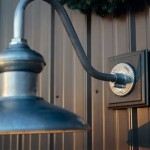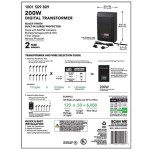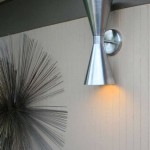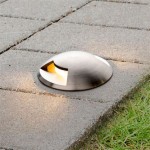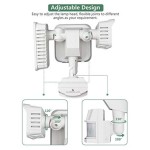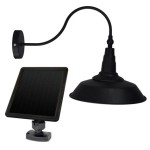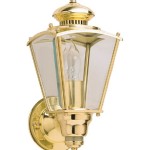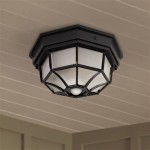The Ultimate Guide to Essential Aspects of Outdoor Down Light PIRs
Outdoor Down Light PIRs (Passive Infrared Sensors) play a pivotal role in modern security systems, offering an effective and efficient way to detect movement and trigger illumination in outdoor areas. Understanding the essential aspects of these PIRs is crucial for selecting the most suitable device for your specific security needs.
How PIRs Work
PIRs rely on the principle of infrared radiation to detect changes in temperature within their detection zone. When an object with a different temperature, such as a human or animal, enters the zone, it causes a change in the infrared radiation pattern, which the PIR sensor picks up. This triggers the PIR to activate, sending a signal to the connected light fixture, which then turns on.
Detection Range and Coverage
The detection range and coverage of a PIR determine the area it can monitor effectively. The detection range is typically measured in meters and refers to the distance at which the PIR can reliably detect movement. The coverage angle, measured in degrees, indicates the width of the area being monitored. Wider coverage angles cover larger areas, while narrower angles focus on specific zones.
Sensitivity Adjustments
PIRs offer adjustable sensitivity settings, allowing you to customize their response thresholds. Higher sensitivity settings make the PIR more responsive, detecting even slight movements. Lower sensitivity settings reduce the number of false alarms caused by small changes in the environment, such as wind or falling leaves.
Time Delay and Hold Time
Time delay and hold time are important parameters that determine how long the PIR remains active after detecting movement. The time delay specifies the duration between detecting movement and activating the connected light fixture. This prevents unnecessary illumination caused by transient movements. The hold time refers to the period the light fixture remains on after the movement has stopped.
IP Rating
The IP rating indicates the level of protection the PIR offers against water and dust ingress. A higher IP rating, such as IP65, ensures better protection against moisture and harsh outdoor conditions, making the PIR suitable for exposed areas.
Mounting and Placement
Proper mounting and placement of the PIR are crucial for optimal performance. The PIR should be mounted at a suitable height and angled to cover the desired detection zone. Avoid pointing the PIR directly at heat sources or reflective surfaces, as these can trigger false alarms.
Additional Features
Some Outdoor Down Light PIRs offer additional features that enhance their functionality and convenience. These may include dusk-to-dawn operation, enabling automatic illumination during night hours; a built-in light sensor that adjusts the sensitivity based on ambient light levels; and remote control compatibility, allowing for easy adjustments and operation from a distance.
Conclusion
Choosing the right Outdoor Down Light PIR for your security needs requires careful consideration of these essential aspects. By understanding the detection range, coverage, sensitivity, time delay, hold time, IP rating, mounting, and additional features, you can select the optimal PIR that provides reliable motion detection and effective illumination for your outdoor areas.

Auraglow Pir Motion Sensor Up Down Outdoor Wall Security Light Warminster Stainless Steel Led Lighting

Up And Down Pir Motion Sensor Wall Light For Outdoor Use

Zink Leto Up Down Wall Light Ip44 Stainless Steel Pir Toolstation

Kenn Outdoor Up Down Pir Wall Light Anthracite Litecraft

Auraglow Pir Motion Sensor Stainless Steel Up Down Outdoor Wall Security Light Warminster Black Led Lighting

Cava Outdoor Rectangular Wall Light Pir Sensor Bhs

Stainless Steel Outdoor Wall Up Down Pir Light Manual Override

Edit Pimlico Outdoor Up Down Wall Light With Pir Sensor Stainless Steel Lighting

Kenn Outdoor Up Down Pir Wall Light Anthracite Litecraft

Lap Bronx Outdoor Up Down Wall Light With Pir Sensor Black Fix
Related Posts
